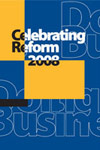Overview
Most entrepreneurs in search of a loan go to the bank. But in countries with inadequate collateral laws, banks are less willing to lend—as in Peru before the 2006 reform of its secured transactions law. For recording security interests, Peru used to have 17 registries for different kinds of assets, each with its own regulations and requirements. This system was a recipe for confusion and uncertainty.
Reform to unify Peru’s asset registries was not easy. It took more than 5 years and faced sharp criticism. Other countries can learn from the positive aspects of Peru’s reform. Peru moved ambitiously to unify its registration system, simplify the enforcement of collateral agreements, and expand the pool of assets usable as collateral. This case study follows the process.
Main Findings
- After a 5-year reform process, the new law went into effect in May 2006. Then the unified Registry at the National Superintendence of Public Registries (SUNARP) became operational in May 2007.
- Immediately after the law came in force in 2006, the rate of registrations was low, with only 103 registrations for the month of June. After June 2006, the rate of registration gradually and steadily increased. It reached the level of over 5,000 registrations in November, 2006 alone.

